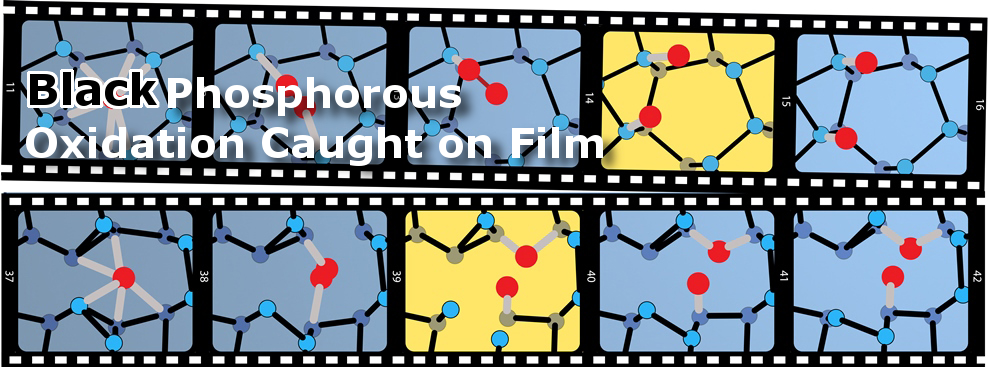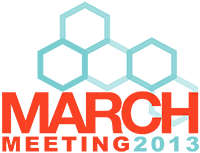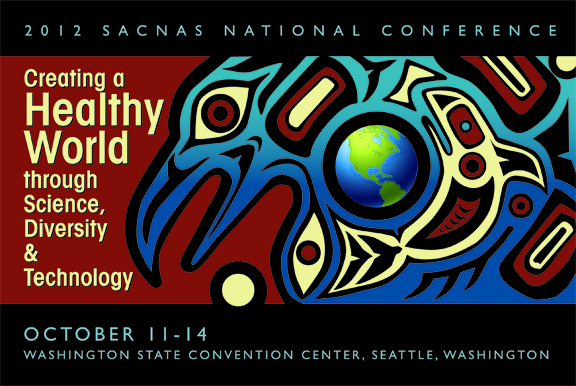Latest News
-
Graphene
Light-Matter InteractionsIn collaboration with the Heller and Kaxiras groups (Harvard), we propose a "Theory of Graphene Raman Scattering”. Published in ACS Nano!
-
We study on the optical properties of eumelanin-inspired molecules!
Light-Matter InteractionsIn collaboration with the Nelson experimental group (OSU Chem), we study the optical properties of eumelanin-inspired molecules. Article published in the Journal of Materials Chemistry.
-
Phosphorene oxidation caught on film!
Light-Matter InteractionsPhosphorene oxidation caught on film! In collaboration with the Barraza-Lopez group (U of Ar.), we study the photo-oxidation of phosphorene. Article published by ACS Central Science.
-
Is transport in graphene Ballistic or Diffusive?
Quantum TransportIs transport in clean graphene Ballistic or Diffusive? Find out in our PRB published work, a collaboration with Hennig and Heller.
-
Semiclassical Methods:
SemiclassicsIn collaboration with Mason (Twitter) and Heller (Harvard), we have developed a semiclassical technique that can reverse engineer wavefunctions. Read about it our published letter, about its applications to graphene, or in a more detailed PRB.
-
Theory of Optimal Local Control
Quantum InformationWith Blasi, Rasanen and Heller, we have proposed a scheme to coherently control coupled quantum dots in an optimized manner by optimizing laser fields PRB and local gate voltages PRB-Rapid.
Last updated (April 29, 2016)
2016
April 29, 2016: This summer Mary Lucy Catlett will be awarded an OK-LSAMP Research Summer Experience scholarship! We thank the generosity of the Oklahoma Louis Stokes Alliance for Minority Participation, Mary will be paid for working 8 weeks in our lab.
April 29, 2016: Sanaz Panahandeh has presented her Masters Report. Congratulations Sanaz, now one small step towards graduating!
April 25, 2016: Cosmo Binegar will be presenting at the Preservice Science Teacher Research Symposium: "Methods for Determining Ideal Organic Photovoltaics."
April 15, 2016: We have two presentations at the Scholar Development Undergraduate Research Symposium:
Mary Lucy Catlett presenting: "Benchmarking the Accuracy of Different Flavors of Density Functional Theory" and Charith DeSilva presenting: "Optimizing Photovoltaic Molecules for future use as an Energy Source."
April 8, 2016: We are happy to announce that Kazsa Fahrenthold will be a Wentz Scholar and Charith DeSilva will be Niblack Research Scholar. Congratulations Kazsa and Charith!
March 16, 2016: We have two presentations at the APS March Meeting 2016; both are parts of an ongoin collaboration with the group led by Salvador Barraza-Lopez at U. of Arkansas.:
Kainen Utt, Salvador Barraza-Lopez, A. Pacheco SanJuan, P. Rivero, M. Mehboudi, E. Harris, and Mario Borunda presenting P16.08: "Intrinsic Defects, Fluctuations of the Local Shape, and the Photo-Oxidation of Black Phosphorus" and Mario Borunda and Salvador Barraza-Lopez presenting P16.00007: "Oxidation of black phosphorus from the side."
February 19, 2016: Members from our group participate and do well in the College of Arts and Sciences 3MT competition. Todd Edmonds presented “Stock Market Behavior” and Paul Smith presented “Spintronics: The new Frontier of Electronics” for which he reached the finals!
February 2016: Our group participates in OSU's Research Week: Shuo Dai presented “First-Principles Study of Optical and Electronic Properties of Eumelanin Inspired Indoles Derivatives,” Todd Edmonds presented “Fractal Graph Analysis and Sector Dimensioning,” and Paul Smith presented “Selection of Rashba Coupling in a Topological System with Quantum Point Contacts.”
February 3, 2016: We are excited to announce that Mary Lucy and Kazsa are recipients of the Spring 2016 Wentz Semester Research Grant! These awards reflect the spirit and generosity of Lew Wentz, as well as the desire of OSU to reward the most motivated and talented undergraduate students.
January 22, 2016: Our article “Theory of Graphene Raman Scattering,” a collaboration with Rick Heller and Tim Kaxiras and their groups at Harvard University, is accepted by ACS Nano. We have interpreted the spectra using the Kramers-Heisenberg-Dirac theory of Raman Scattering.
January 18, 2016: Our article “Effects of Structural Variations on the Optical and Electronic Properties of Eumelanin-Inspired Small Molecules,” a collaboration with the Nelson experimental group (OSU Chem), is accepted. Our study of the optical properties of eumelanin-inspired molecules is part of a themed collection in the Journal of Materials Chemistry C -- Emerging Investigators 2016: Novel design strategies for new functional materials. This is also the first paper published by Shuo in our group.
January 15-17, 2016: Freshman Mary Lucy attends her first conference, the Conference for Undergraduate Women in Physics in San Antonio, TX where she also presented a poster with our work.
Spring 2016: We extend a warm welcome to Richa! She is interested in Condensed Matter Physics and is in her second semester at OSU.
2015
December 31st, 2015: Mario is elected to the board of the National Society for Hispanic Physicists as Technical Officer! His two-year term begins in 2016.

September 17, 2015:
Mario Borunda, is part of the international team who discovered and described a mechanism for the oxidation of black phosphorus. In collaboration with the team led by Salvador Barraza-Lopez (U. of Arkansas) and Alejandro Pacheco (U. del Norte, Colombia), Mario Borunda, Assistant Professor of Physics in the College of Arts and Sciences and expert in semiconductors, showed that phosphorene structures change shape as they oxidize. Black phosphorous is just one of the many allotropes of phosphorus. Phosphorene refers to a single atomic layer of black phosphorous and was isolated and used to make electronic devices in 2014. This new two-dimensional material is similar to graphene and could lead to future electronic devices such as transistors. Unlike graphene, phosphorene is a semiconductor making it more likely to realize its potential in future electronic devices. Phosphorene, however, is unstable because it readily oxidizes and its degradation dynamics were largely unknown. Using computational and theoretical techniques, it was found that oxygen molecules break-up near intrinsic defects such as dislocation lines and structural curvature which results in the shattering of the structure and degradation. A good portion of the calculations were carried out in Cowboy, OSU’s supercomputer at the High Performance Computing Center.
Intrinsic Defects, Fluctuations of the Local Shape, and the Photo-Oxidation of Black Phosphorus, by Kainen L. Utt, Pablo Rivero, Mehrshad Mehboudi, Edmund O. Harriss, Mario F. Borunda, Alejandro A. Pacheco SanJuan, and Salvador Barraza-Lopez. ACS Central Science Article. DOI: 10.1021/acscentsci.5b00244.
This work was featured with a “First Reactions” summary written by the leading scientists in 2D materials (Alexandra Carvalho and Antonio H. Castro Neto) 10.1021/acscentsci.5b00304.
Fall 2015: Three undergraduate students decided to join our research group: Welcome Todd, Mary Lucy, and Kazsa. Todd is interested in econophysics, Mary in the discovery of photovoltaic materials, and Kazsa in foundations of quantum mechanics.
August 18, 2015: Congratulations Wakun! Eleven months after joining the Borunda group, he has succesfully defended his qualifying examination.
July 31st: The paper "Intrinsic defects, fluctuations of the local shape, and the photo-oxidation of black phosphorus" is accepted to ACS Central Science. This paper is a result of an ongoing collaboration with Prof. Barraza-Lopez (U. of Arkansas) and Prof. Pacheco SanJuan (U. del Norte, Colombia). Congratulations Kainen on your first first-author paper! We are delighted as ACS Central Science is a new journal that publishes research of exceptional quality.
June 19th: The Boards of Regents of Oklahoma State University have approved Mario's Reappointment. Congratulations!
June: Charith Desilva is accepted into the prestigous Wentz Research Scholar program. Here is the announcement. Congratulations!
April 17: Mario is invited to present the Physics seminar at the University of Tulsa.
March 24: The paper "Revealing the flux: Using processed Husimi maps to visualize dynamics of bound systems and mesoscopic transport," is accepted for publication in the Physical Review. This paper is the latest from our fruitful collaboration with Dr. Mason (Twitter) and Prof. Heller (Harvard), on developing novel semiclassical techniques.
March 6: Mario Borunda gives an invited oral presentation at the XI International Symposium on Radiation Physics, Ciudad Juarez, Mexico.
March 2-6: Five presentation by our group and collaborators at the 2015 APS March meeting. Shuo Dai (V1.00249) and Wakun Lam (V1.00037) presented posters. Mario Borunda (S34.00001), Paul Smith (T26.00012), and Kainen Utt (A2.00011) (Collaborator from U. of Arkansas) gave oral presentations.
2014
October 20: Charith Desilva joins our group. He is a Freshman Research Scholar. Welcome!
September 20: Wakun Lam becomes a member of our group. He will be co-advised by Professor Gil Summy and continue doing experimental and theoretical research while in our group.
March 20: The winners of the Annual OSU Research Symposium presentations have been announced. Congratulations to Robert Radford who won first place (and $100.00) in the Physical Sciences and Technology area.
February 17-21: Five students from our group get to present their research in the 11th Research Week event at Oklahoma State. Paul Smith, Shuo Dai, Nicholas Melko, and Zach Fletcher will present posters while Robert Radford was braver and gave an oral paper presentation.
January 15: We start the year by welcoming a new Ph.D. student: Sanaz Panahandeh. Happy New Year everyone!
2013
November 20, 2013: Shuo has succesfully defended his qualifying examination. He is now the first doctoral candidate in our group.
November 8, 2013: Welcome Shuo! This month our group grew by a graduate student, Shuo Dai. Shuo completed his master degree at Oklahoma State University in the Xie group, and is now beginning his doctoral studies in our group. We are excited to have him.
October 22, 2013: The paper "Semiclassical deconstruction of quantum states in graphene," is accepted for publication in PRB. This is the second paper from our collaboration with Dr. Douglas Mason (research scientist at Twitter) and Prof. Eric Heller (Harvard).
October 4, 2013: Materials Challenges for Our Future: How Science Will Improve Our World

Manuel Quevedo (UT-Dallas), Steve Greenbaum (CUNY and Hunter College), Mario Borunda (Oklahoma State University), and Xomalin Peralta (UT-Dallas Antonio), invited speakers at the Materials session of the 2013 SACNAS meeting in San Antonio, Texas. The session was supported by the National Society of Hispanic Physicists and proposed by Sergio Ulloa (Ohio University) and Mario Borunda. #SACNAS
September 9, 2013: The paper "Ballistic versus diffusive transport in graphene," is published in PRB. In collaboration with Dr. Hennig (research scientist at Boston's Broad institute) and Prof. Eric Heller (Harvard), we have proposed a new method to asses the nature of transport in clean graphene devices.
June 7, 2013: Our group is now part of NVIDIA's Academic Partnership Program!
The NVIDIA corporation, the World Leader in Visual Computing Technologies,
has made a hardware 'seeding' gift of a Tesla K20 GPU card.
This donation will provide essential support to all of our important research projects spanning parallel computing innovation.
We are the first NVIDIA Academic Partner in Oklahoma!


June 7, 2013: The paper "Quantum Flux and Reverse Engineering of Quantum Wavefunctions," is accepted for publication in EPL. This paper is the first from our collaboration with Dr. Douglas Mason (research scientist working at Twitter) and Prof. Eric Heller (Harvard), on understanding quantum mechanics with novel semiclassical techniques.
June 5, 2013: The paper "Optimal local control of coherent dynamics in custom-made nanostructures," has been accepted for publication in the Physical Review B as a Rapid Communication. Congratulations to Thomas Blasi (now modeling gene expression @ the German Research Center for Environmental Health) on his first first-author paper!
May 20-24, 2013: Mario attends the Cyberinfrastructure for Atomistic Materials Science Summer School at the University of Florida.
March 21, 2013: The abstract "Optical control of entangled states in semiconductor quantum wells" was presented by Mario at the 2013 APS March meeting in Baltimore Maryland. Look for members of the group in Session U27: Quantum Entanglement: Theory and Experiment.

February 8, 2013: Our computer cluster is now up and running. Vaquero@ps.okstate.edu, will be busy doing time-dependent density functional theory calculaitons for the next few months.
December 12, 2012: Edgar Nandayapa, is the first undergraduate student from our group to graduate. Congratulations Edgar and best of luck in your future in Mexico and Germany!
November 12, 2012: We welcome undergraduate student, Edgar Nandayapa, to the group.
November 9, 2012: Mario gives an invited presentation in Norman, OK. His talk covers our recent article in quantum optimal control theory in semiconductor double well systems and is part of the Condensed Matter Seminar series of the Homer L. Dodge Department of Physics and Astronomy at OU.
November 2, 2012: Mario presents in our Deparment's Journal Club. The Talk covers our new paper in quantum optimal control theory in semiconductor double well systems.
October 16, 2012: The first paper from the group has been accepted for publication in the Physical Review! A collaboration with Professors Esa Rasanen (Tampere University, Finland) and Eric Heller (Harvard), and Diploma Student Thomas Blasi from TU Munchen led to the first application of quantum optimal control theory to entangle the states of electrons in a double quantum dot structure. Our ability to coherently control arbitrary two-electron states opens up further perspectives in solid-state quantum information.
October 12, 2012: Congratulations to Grant! He is now a Louis Stokes Alliance for Minority Participation (LSAMP) fellow.
October 11-14, 2012: Mario will attend the 2012 SACNAS National Conference in Seattle, Washington. SACNAS is an interdisciplinary and inclusive organization and the SACNAS National conference is one of the largest annual gatherings of minority scientists in the country.

Mario is the session chair and one of the presenters for the "Computational Nanoscience: where Chemistry, Materials Science, and Physics meet" scientific session taking place October 12, 2012.
September 27, 2012: We welcome graduate student Paul Smith to our group.
September 18, 2012: We welcome our second undergraduate student, Zach Taylor, to the group. In less than a week the group grew 200%!
September 13, 2012: A warm welcome to Grant Williams. He is the first undergraduate student to join the group.
August 16, 2012: The Borunda group opens for bussiness! We are in the process of setting up offices and ordering the components that will be used to put together our computer cluster. Suggestion for computer names are welcomed!
